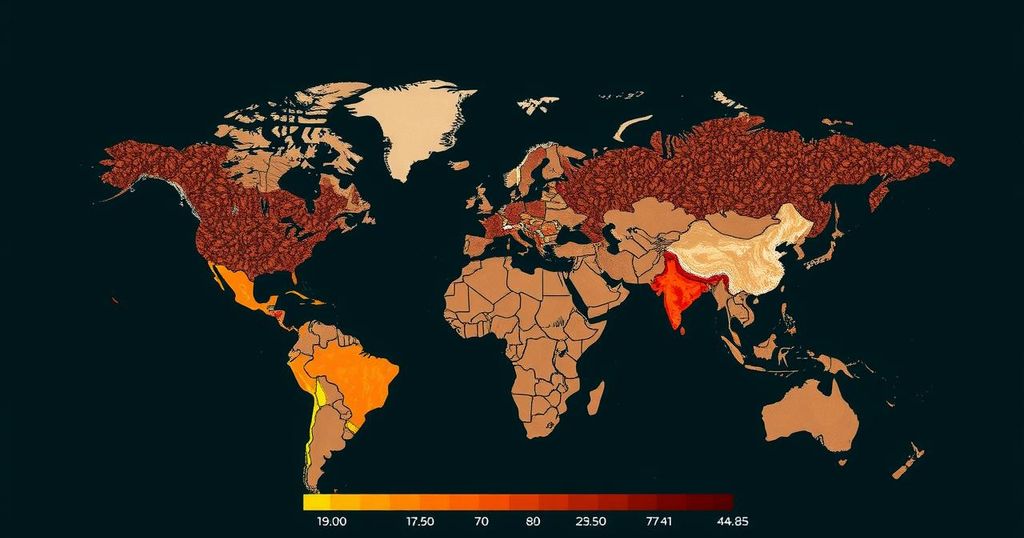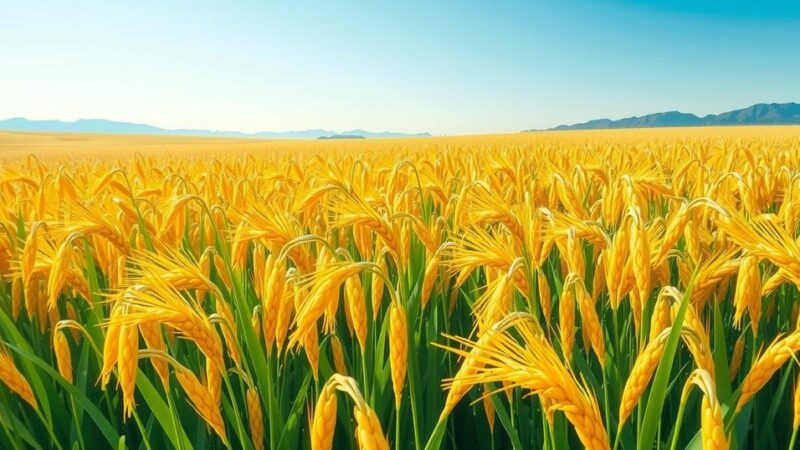Environmental disruptions driven by climate change are adversely impacting cacao trees, leading to increased chocolate prices and necessitating sustainable cocoa practices in the U.S. and Europe. The rising temperatures and humidity are affecting production across key cocoa-producing countries, with new initiatives underway to foster sustainability and improve farmer livelihoods, as cocoa prices soar to record levels due to crop shortages.
Recent environmental disruptions linked to climate change have resulted in the decline of cacao tree populations, consequently driving up chocolate prices and highlighting the urgent need for sustainability in cocoa production within the United States and Europe. Significant alterations in temperature patterns and increased humidity from rainfall have transformed the environmental conditions in a region that spans 40 degrees around the equator—typically the climate suitable for cacao growth. This region, which encompasses areas 20 degrees above and below the equator, includes major cocoa-producing countries such as Brazil, Cameroon, Côte d’Ivoire, the Dominican Republic, Ecuador, Ghana, Indonesia, Nigeria, and Peru. Collectively, these nations account for approximately 90% of the world’s cocoa production, contributing around five million tonnes annually. Cacao trees are particularly sensitive to environmental changes, and they exhibit diminished bean production under unfavorable conditions and extreme weather patterns. The adverse effects of climate change are especially evident in Côte d’Ivoire and Ghana, which produce over half of the world’s cocoa. As temperatures rise and weather becomes wetter, mealybug populations are thriving, exacerbating the plight of cacao trees. Although often overlooked, these pests bring about a deadly virus known as the swollen shoot virus, which has resulted in the death of an estimated 200 million cacao trees, thus contributing to rising cocoa prices. Additionally, the National Oceanic and Atmospheric Administration (NOAA) has attributed increasing heatwaves and severe rainfall patterns to the proliferation of black pod disease, a fungus that further decimates cacao tree populations. A recent statement from the United Nations Conference on Trade and Development (UNCTAD) underscored this issue, indicating that cocoa futures prices recently soared to an unprecedented $10,000 per metric tonne, marking a 136% increase from July 2022 to February 2024. In response to these challenges, key stakeholders in the U.S. and Europe are pivoting towards sustainable cocoa solutions to mitigate the damaging effects of climate change and deforestation within the cocoa industry. For example, the U.S. Agency for International Development launched a project in mid-2023, aiming to educate 6,500 cacao and coffee farmers in Indonesia on sustainable agroforestry practices. The United States remains a significant player in the global chocolate industry, with chocolate and cocoa product imports reaching $3.9 billion in 2023, alongside $1.9 billion in exports primarily to Canada, Mexico, and Vietnam. In Europe, Germany has initiated the “German Initiative on Sustainable Cocoa,” which seeks to enhance the living conditions of cocoa farmers and mandates the procurement of 100% sustainable cocoa. As of 2023, the initiative has successfully increased the share of sustainably produced cocoa sweets sold in Germany to 92.2%. Meanwhile, Switzerland’s “Swiss Platform for Sustainable Cocoa” is advocating for sustainable cocoa imports, aiming for 80% sustainability by 2025. The growing awareness and implementation of sustainable cocoa practices demonstrate a promising potential for benefiting both the chocolate market and the livelihoods of cocoa farmers, thereby ensuring a brighter future for the industry as a whole.
The relationship between climate change and cocoa production is becoming increasingly apparent as environmental factors continue to affect cacao trees globally. Cocoa is primarily grown in tropical regions near the equator, with West Africa being the leading supplier. However, climate change poses significant threats to cacao trees, which are sensitive to fluctuating environmental conditions. As temperatures rise and weather patterns shift, the fragile ecosystems supporting cocoa growth are under considerable strain, leading to detrimental impacts on production levels and prices. These challenges have prompted stakeholders in the chocolate industry to seek sustainable practices that could ameliorate the situation for farmers and stabilize the market.
The intersection of climate change and cocoa production presents a stark reality for the chocolate industry. With cacao tree populations facing severe threats from environmental disruptions, the price of cocoa beans continues to rise, emphasizing the critical need for sustainable practices in cocoa cultivation. Collaborative initiatives in the U.S. and Europe are vital in shifting towards more environmentally responsible production methods, which not only aid in the conservation of cacao trees but also enhance the livelihoods of farmers. A sustainable approach is essential to ensure a stable future for cocoa production and, by extension, the chocolate industry.
Original Source: www.forbes.com






